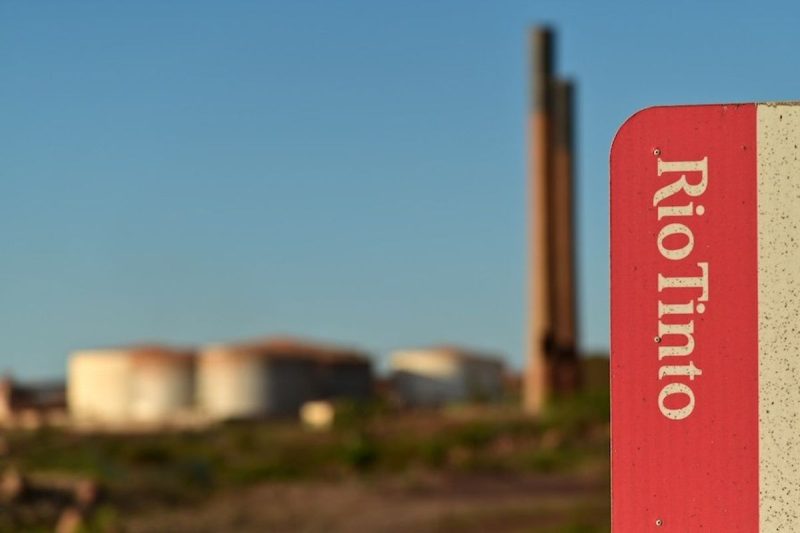
Rio Tinto Delivers Resilient Q1 Performance, Commits to Safety After Plane Crash
Major diversified miner Rio Tinto (ASX:RIO,NYSE:RIO,LSE:RIO) weathered both operational challenges and a tragic loss to deliver a resilient performance in the first quarter of 2024.
Despite grappling with the aftermath of a devastating plane crash that claimed six lives, including four Diavik diamond mine employees, the company has emerged with stable operational results.
“We delivered stable operating results in the first quarter, including improvements at our bauxite and aluminum businesses, as we navigated seasonal challenges across our global operations. Our full year guidance is unchanged across all our products,” said company CEO Jakob Staushold in a statement.
“We remained focused on growth in energy-transition materials, with the ramp-up at Oyu Tolgoi underground, the first full quarter of recycled aluminum production from Matalco and further progress at Simandou, our high grade iron ore project in Guinea,’ he added. Rio Tinto shared its results with investors on Wednesday (April 17).
Production figures across key commodities revealed a mixed performance in the first quarter of 2024. Pilbara iron ore shipments, on a 100 percent basis, totaled 78 million tonnes, down 5 percent from the same period in 2023. In contrast, bauxite production rose by 11 percent to reach 13.4 million tonnes, driven by continued operational stability at key sites such as Weipa and Gove.
Aluminum production witnessed a 5 percent increase, totaling 826,000 tonnes compared to the first quarter of the previous year. Mined copper production experienced a 7 percent uptick, reaching 156,000 tonnes on a consolidated basis.
In light of the January plane crash, the company is aiming to improve its safety standards and policies.
“We have been deeply affected by the loss of four Diavik colleagues and two airline crew members in a plane crash in January. This tragedy has strengthened our resolve to never be complacent about safety,” said Staushold.
Emphasizing its commitment in ensuring safety in its processes, Rio Tinto said it is focusing on a deeper rollout of its Safe Production System at the 24 sites where it has so far been deployed.
Key developments outside production
Notable developments outside of production activities also punctuated the first quarter.
In January, Dampier Salt, a joint venture in which Rio Tinto owns a 68 percent stake, entered into a sales agreement worth AU$375 million for the Lake MacLeod salt and gypsum operation in Carnarvon, Western Australia.
The deal is with privately owned salt company Leichhardt Industrials, and is expected to be complete by the end of the year pending certain commercial and regulatory conditions.
Rio Tinto also noted that it plans to manage the Ranger Rehabilitation Project in Australia’s Northern Territory on behalf of Energy Resources of Australia (ASX:ERA,OTC Pink:EGRAF). This endeavor, facilitated through a new management services agreement, will leverage Rio Tinto’s technical expertise to enhance Energy Resources’ ongoing rehabilitation efforts, aligning with the broader industry trend towards environmental stewardship and sustainability.
In the Pilbara region, construction progress on the Western Range mine surpassed the halfway mark, with the aim for first ore delivery by 2025. Additionally, the company is pushing forward with replacement studies for several Pilbara mines: Hope Downs 1, Brockman 4, Greater Nammuldi and West Angelas.
The Rhodes Ridge prefeasibility study remains on track, targeting an initial capacity of up to 40 million tonnes per year. Commissioning is slated for the end of the decade, following a feasibility study. Further afield, the Oyu Tolgoi underground project in Mongolia is performing well, with significant progress in shaft sinking and ventilation infrastructure. Commissioning milestones for critical components are expected in the second half of 2024.
Lastly, Rio Tinto’s board approved the company’s share of capital expenditure for the Simandou iron ore project in Guinea, pending joint venture partner and regulatory approvals. Rio Tinto’s estimated share of capital expenditure stands at approximately US$6.2 billion, and first production is expected in 2025.
Securities Disclosure: I, Giann Liguid, hold no direct investment interest in any company mentioned in this article.
